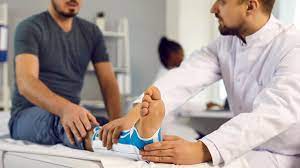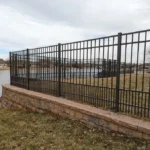Living with pain can affect nearly every part of your day. From simple tasks like walking to getting a good night’s sleep, discomfort can slowly take control. Many people think surgery is the only answer for lasting relief, but that’s not always true. There are several non-surgical treatments designed to reduce pain, restore movement, and help the body heal naturally. This article explores practical options that bring comfort without the need for invasive procedures.
According to Dr. Ilana Etelzon pain management doctor, non-surgical therapies can be just as effective as surgery in managing pain, depending on the condition. These treatments focus on reducing inflammation, improving mobility, and supporting the body’s natural healing process. With proper guidance and consistency, patients can regain comfort and function safely.
Physical Therapy for Strength and Stability
Physical therapy remains one of the most trusted approaches for treating pain without surgery. It helps strengthen weak muscles, correct posture, and restore flexibility. The goal is to reduce stress on affected areas while improving balance and coordination.
Common benefits of physical therapy include:
- Enhanced range of motion
- Better muscle control
- Faster recovery after injuries
- Reduced need for medication
In many hospitals, specialists design custom therapy plans based on individual needs. Working with trained professionals ensures exercises are safe, targeted, and effective for long-term comfort.
Injections That Reduce Pain and Inflammation
Injections provide focused relief when pain is localized or severe. These treatments deliver medication directly to the source of discomfort, offering faster results than oral medicine.
Types of injections used for pain management include:
- Corticosteroid injections – reduce swelling in joints and soft tissue.
- Trigger point injections – relieve muscle knots that cause tension.
- Nerve block injections – calm irritated nerves that send pain signals.
Experts such as Dr. Ilana Etelzon explain that injections can offer short-term relief while giving patients the ability to continue other healing therapies. Combined with physical therapy or gentle exercise, they form part of a balanced recovery plan.
Lifestyle Adjustments That Support Healing
Small lifestyle changes can make a big difference in reducing pain. Habits like staying hydrated, eating anti-inflammatory foods, and maintaining good posture create a stronger, healthier body. Helpful everyday habits are,
- Stretch gently each morning and before bed.
- Eat a diet rich in vegetables, lean proteins, and healthy fats.
- Use ergonomic chairs and supportive footwear.
- Limit long sitting sessions by moving every hour.
Even minor shifts like walking more or adjusting your workspace can reduce strain. The body responds positively when given consistent care and mindful attention.
Alternative Therapies for Natural Relief
Many people find relief through complementary treatments that work alongside medical care. These approaches focus on improving circulation, reducing muscle tension, and calming the nervous system.
Popular options include:
- Acupuncture – stimulates pressure points to restore energy flow.
- Massage therapy – eases muscle tension and improves blood circulation.
- Chiropractic adjustments – realign the spine to improve mobility.
Each method helps activate the body’s natural repair mechanisms. When guided by professionals, these therapies can enhance comfort without relying on invasive techniques or strong medication.
Mind-Body Practices That Promote Comfort
Chronic pain impacts physical health as well as mental well-being. Stress, anxiety, and fatigue can make symptoms feel worse. Mind-body practices encourage relaxation and help break the pain-stress cycle.
Simple techniques to try:
- Deep breathing exercises to relax muscles and lower tension.
- Gentle yoga to improve flexibility and calm the mind.
- Meditation or mindfulness to build awareness and reduce stress.
Pain management specialists recognize that emotional wellness plays a key role in physical healing. Creating space for calm and balance allows the body to rest and repair more effectively.
Non-surgical treatments offer real hope for people seeking pain relief without major procedures. From targeted injections to gentle movement and mindfulness, these methods promote healing through natural, consistent care. As Dr. Ilana Etelzon pain management doctor, advises, combining medical expertise with lifestyle adjustments leads to lasting comfort. With patience and steady effort, pain can ease, mobility can return, and life can feel fulfilling again, without surgery.






